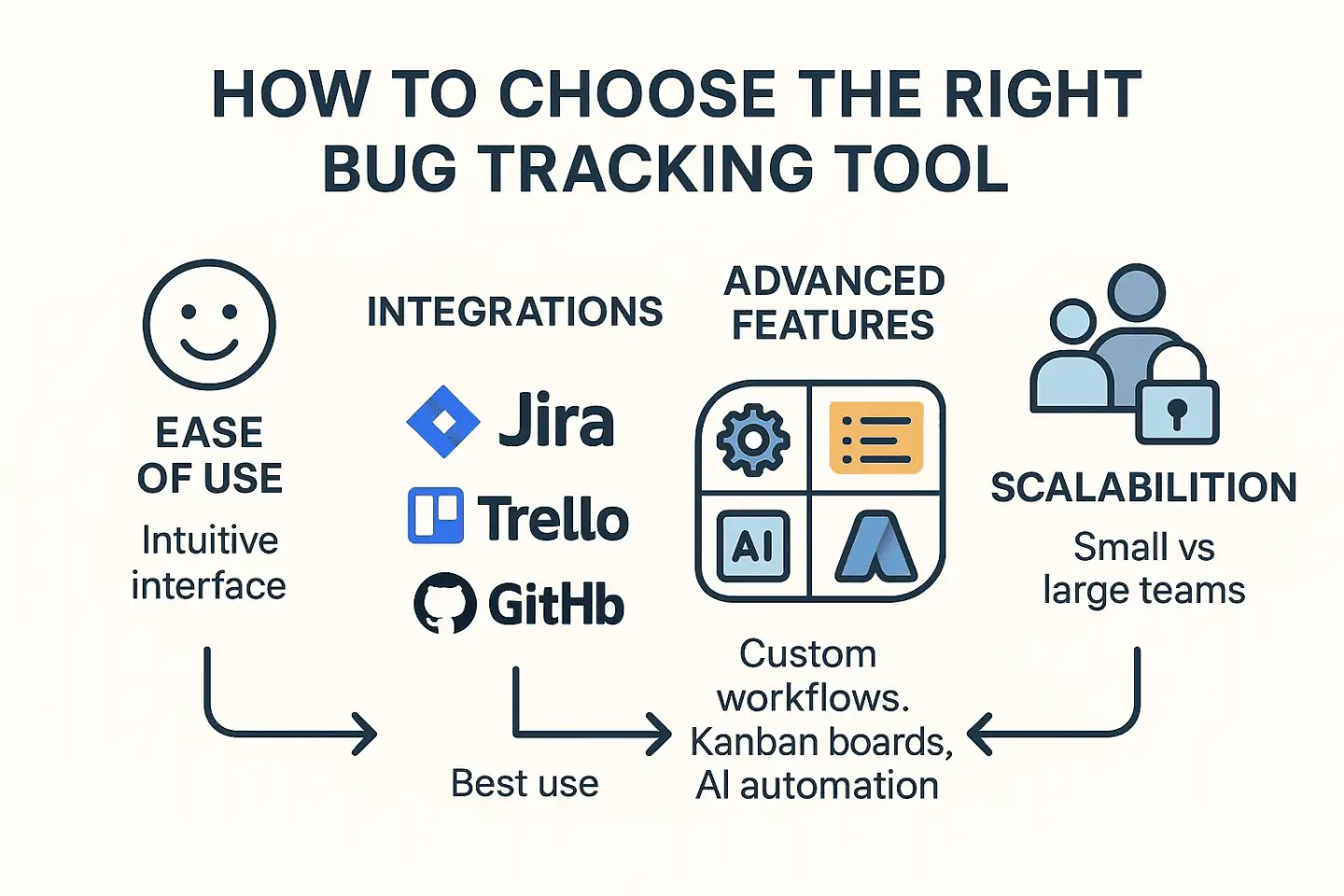We test and review software products using an independent, multipoint methodology. If you purchase something through our links, we may earn a commission. Read about our editorial process.
In the world of software development projects, efficiently tracking and resolving software bugs is crucial for maintaining high software quality and enhancing user experience. Whether it’s for small teams or larger teams, a reliable bug tracker helps streamline bug reporting, issue management, and defect tracking, enabling smoother software development lifecycle processes.

By leveraging the right bug tracking software, teams can reduce the learning curve for software developers, QA teams, and project managers, and ensure faster bug fixes while improving overall product quality. This guide reviews three leading tools for 2025—BugHerd, Nulab (Backlog), and Usersnap—highlighting their features, custom workflows, and suitability for different team sizes and development environments, helping you select the best issue tracker for your needs.
Choosing the ideal bug tracking software requires careful consideration of various factors. An intuitive user interface or intuitive interface ensures that both developers and non-technical team members can easily submit bug reports and follow the bug resolution process. Integration with project management tools, test management, CD tools, and development environments is vital to streamline workflows and simplify issue tracking.
Advanced features such as custom fields, email notifications, task management, kanban boards, and AI-powered automation can further optimize defect tracking and bug capture across mobile devices and web platforms. Free plans or open source solutions are valuable for smaller teams, while robust features and scalability support larger teams. Finally, ensuring proper access control and support for team collaboration strengthens the bug resolution process and contributes to higher software quality.
BugHerd is a highly visual bug tracker designed for software developers and web development teams. Its standout feature is in-context bug reporting, allowing users to click directly on the page to submit a bug report, reducing ambiguity in the bug capture process. With its Kanban boards, custom workflows, and integration with project management tools such as Jira, Trello, and Asana, BugHerd streamlines both issue management and task management. The platform’s intuitive interface lowers the learning curve, making it accessible to both developers and non-technical team members. BugHerd is particularly effective for small teams looking for a best bug tracking software that simplifies issue tracking while maintaining software quality. Its scalable pricing accommodates teams of various sizes, and it also integrates well with CD tools to enhance the software development process.
Nulab’s Backlog combines bug tracking software with full project management tools, making it ideal for teams managing complex software development projects. Backlog allows developers to track bugs, assign tasks, and monitor progress throughout the software development lifecycle. Integration with version control systems like Git and SVN supports issue tracking alongside test case management, while custom fields and custom workflows provide flexibility for QA teams and project managers. Its robust features, including email notifications, team collaboration, and task management, make it suitable for both smaller teams and larger teams. Backlog also aligns with agile project management practices and can integrate with platforms such as Azure DevOps or GitHub Issues, enabling faster bug fixes and smoother bug resolution processes. Its scalable pricing ensures that teams of all sizes can access the tools they need to maintain high software quality.
Usersnap offers an AI-powered bug tracking software for capturing customer feedback, bug reports, and issues across mobile devices and web applications. Users can annotate bug capture screenshots, making defect tracking and issue management clear and actionable. Its AI-driven feedback analysis automatically categorizes and prioritizes bugs, improving efficiency in software development projects. Usersnap integrates seamlessly with tools like Slack, Jira, Trello, and Zoho Bugtracker, enabling comprehensive team collaboration and bug resolution processes. With support for custom workflows, email notifications, and access control, Usersnap scales from smaller teams to larger teams, providing flexibility and advanced features for managing software bugs and maintaining product quality. This makes it a top choice for teams seeking best bug tracking software with AI-enhanced issue tracking capabilities.
When comparing BugHerd, Nulab (Backlog), and Usersnap, each platform offers distinct advantages. BugHerd shines in visual bug reporting and simplicity, making it easy for software developers to track and fix bugs without extensive training.

Nulab (Backlog) combines project management tools with bug tracking software, supporting complex software development processes and agile project management workflows. Usersnap leverages AI for automated issue management and bug prioritization, enhancing team collaboration and the bug resolution process. The choice depends on team size, workflow complexity, and the need for robust features such as test management, custom workflows, CD tools, and integration with platforms like GitHub Issues, Zoho Bug Tracker, or Azure DevOps.
BugHerd, Nulab (Backlog), and Usersnap are among the best bug tracking software solutions for 2025, offering a range of features to improve software quality, issue tracking, and bug resolution processes. BugHerd is ideal for teams seeking a visual, intuitive interface for straightforward bug reporting. Nulab (Backlog) serves teams that need integrated project management tools with custom workflows. Usersnap excels for teams wanting AI-powered bug tracking software that streamlines issue management and team collaboration across mobile devices and web environments. Evaluating each platform and leveraging trial versions ensures your team selects the best tool to track bugs, enhance software development lifecycle efficiency, and maintain high product quality